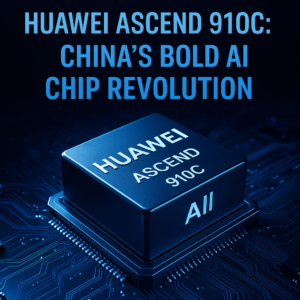NVIDIA’s Dominance in AI: Why AMD Faces an Uphill Battle
In the rapidly evolving realm of artificial intelligence, staying ahead is not just about innovation; it’s about execution, resources, and strategic foresight. NVIDIA has firmly established itself as the powerhouse driving AI advancements, creating a stark contrast with AMD, which is finding it increasingly challenging to catch up. But what exactly sets NVIDIA apart, and why is AMD struggling to keep pace?
Early Investments in AI-Specific Hardware
One of the primary reasons for NVIDIA’s success lies in its early investments in AI-specific hardware. The company recognized the potential of deep learning and neural networks years ago, leading to the development of the Tesla series of GPUs optimized for AI workloads. These GPUs are tailored to handle the massive parallel processing required for deep learning, making them the preferred choice for data centers and researchers worldwide.
Focus on Gaming vs. AI
In contrast, AMD has traditionally focused on gaming and general-purpose computing. While the company has made strides with its Radeon GPUs, which are increasingly being used in AI applications, it lacks the same level of optimization as NVIDIA’s offerings. The architecture of NVIDIA’s GPUs, particularly the Tensor Cores designed specifically for AI tasks, gives them a distinct advantage in training and inferencing AI models.
The Importance of Ecosystem
Moreover, NVIDIA’s ecosystem plays a critical role in its dominance. The company has built a comprehensive suite of software tools, including CUDA and TensorRT, which allow developers to harness the full potential of its hardware easily. This software ecosystem fosters a community of developers and researchers who are loyal to NVIDIA’s platform, creating a self-reinforcing cycle of innovation and adoption. AMD is making efforts to develop similar tools, but it remains in the early stages compared to NVIDIA’s well-established framework.
Strategic Partnerships
In addition, NVIDIA’s partnerships with major players in the tech industry, from cloud service providers to research institutions, further solidify its position. These collaborations ensure that NVIDIA’s hardware is integrated into cutting-edge AI projects and applications, from autonomous vehicles to advanced healthcare solutions. AMD, while partnering with some firms, has not yet achieved the same level of penetration in critical AI sectors.
Financial Advantages
Financially, NVIDIA has the upper hand as well. Its strong market capitalization allows for aggressive R&D investment, enabling rapid advancements and adaptations to emerging AI trends. AMD, on the other hand, has had to allocate resources judiciously, making it more difficult to match NVIDIA’s pace of development.
Production Challenges
Challenges also exist on the production side. NVIDIA has established a robust supply chain for its products, ensuring that it can meet the soaring demand for AI hardware. AMD has faced its own supply chain issues, which have hindered its ability to scale up production in response to market needs.
In conclusion, while AMD is a formidable competitor in the semiconductor space, it faces significant obstacles in catching up to NVIDIA in the AI domain. The combination of NVIDIA’s early investment, optimized hardware, robust software ecosystem, strategic partnerships, and financial resources creates a steep hill for AMD to climb. As the world increasingly turns to AI-driven solutions, NVIDIA’s lead may only widen unless AMD can pivot effectively and innovate at a faster pace.


